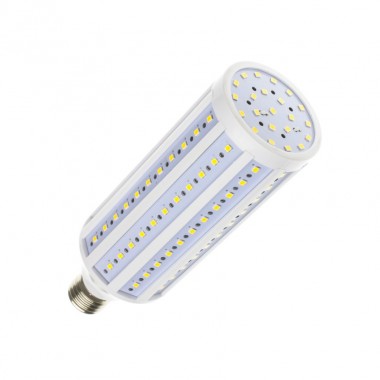First advert I looked at was 105 x 37 mm and since that seems like a normal candle bulb and a standard globe bulb is around 75.5 x 45 mm it seems unlikely you will find a candle bulb of those dimensions. In the main LED bulbs are E14 there are some BA22d made, but not as easy to find.
When I came to change to so called energy saving bulbs I realised I was not going to get a like for like equivalent.
this is the typical LED candle bulb, I selected BA22d as that's what you want, the first thing you will note is no light shines towards the base, same with E14 all the light is sidewards or up, with the base at the bottom they work well reflecting the light off the ceiling, turn the base to top and they do not do nearly as well.
You can get small wattage up to around 3 watt reasonable cheap jump to 6 watt and the cost goes up, so for me step one was change the three lamp fitting to a 5 lamp fitting, so I can use smaller wattage bulbs and still get the light output. Size does matter, the bigger the surface area of the bulb the more useful light it gives off.
But reason to swap to LED is not electric price, using so called energy saving bulbs out side saves energy, in side it means the central heating needs to produce more heat to compensate for heat not coming from bulbs, since we use lights at night when we tend not to be as active the heat from the lights works well, so a house set at say 18°C in the day is at 18°C but at night the air is still 18°C but we have inferred heat for lights boosting the heat into the body so we still feel warm. Without the tungsten lamp we need the room to be a 20°C to get 20°C just at night only in occupied rooms means eTRV's in every room with a PIR or smart light switch detecting if occupied so it can boost the temperature, even then the lag between the target heat changing and room hitting the target means the tungsten bulbs still does a better job.
So to reduce maintenance the LED is great, to save money on heating bills better with tungsten. Yes the lighting bill may go down, but heating bill will likely go up by a greater amount than the lighting bill goes down. Since it will vary house to house, ventilation makes the tungsten better a sealed stuffy house favours LED, there can be no 100% answer to which costs the most to run. However it is very possible in real terms tungsten bulbs save more energy than LED.
Even the curtains matter and type of glass, we can't destroy energy, so light energy is converted into heat, but where it converts it to heat is what matters, loads of windows with no curtains all heat from light bulbs is lost, just fit heavy curtains and all that energy is retained in the house. Remember inferred will pass through glass, double glazing does not help.
I have moved to all LED but not to save energy, simply so I am not changing bulbs every week.



